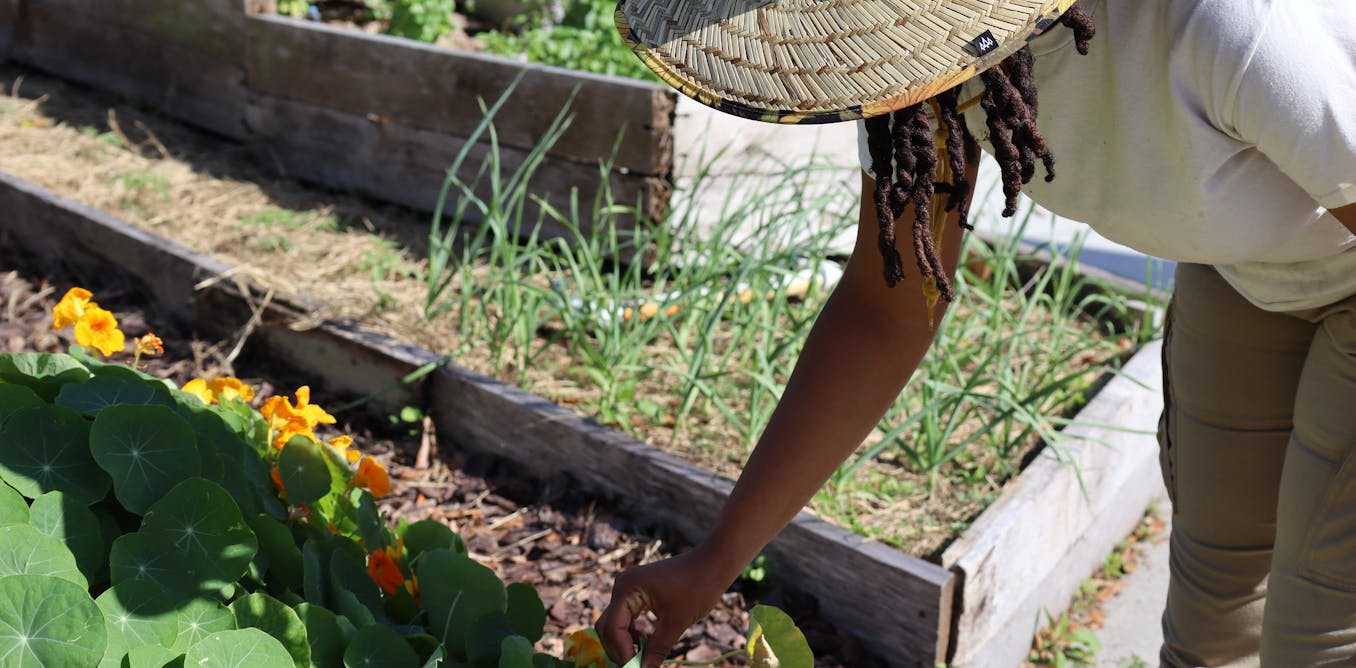City Blooming - Questions
City Blooming - Questions
Blog Article
The City Blooming Diaries
Table of ContentsCity Blooming Things To Know Before You Get This3 Easy Facts About City Blooming ShownCity Blooming - The FactsAll About City BloomingCity Blooming Things To Know Before You Buy
Urban farming supplies one-of-a-kind opportunities to connect varied communities together. In addition, it provides possibilities for health and wellness treatment companies to connect with their clients. Thus, making each community yard a center that is reflective of the neighborhood.
The power made use of to transport food is decreased when urban farming can offer cities with locally grown food. Pirog discovered that traditional, non-local, food circulation system used 4 to 17 times more fuel and gave off 5 to 17 times extra CO2 than the local and local transportation. Similarly, in a research by Marc Xuereb and Area of Waterloo Public Health And Wellness, it was estimated that switching to locally-grown food could conserve transport-related exhausts equal to nearly 50,000 statistics loads of CO2, or the equivalent of taking 16,191 cars off the road.

3 Simple Techniques For City Blooming
Plants take in atmospheric carbon dioxide (CO2) and release breathable oxygen (O2) through photosynthesis. The procedure of Carbon Sequestration can be better boosted by incorporating other agriculture techniques to enhance removal from the atmosphere and stop the release of CO2 during harvest. However, this process relies greatly on the kinds of plants picked and the method of farming.
The decrease in ozone and other particle issue can benefit human health. Reducing these particulates and ozone gases might decrease mortality prices in urban locations in addition to increase the wellness of those staying in cities. A 2011 short article found that a roof including 2000 m2 of uncut yard has the prospective to eliminate up to 4000 kg of particle matter which one square meter of green roof covering is enough to offset the yearly particulate issue emissions of a cars and truck. The implementation of metropolitan farming in these vacant lots can be a cost-efficient method for getting rid of these chemicals., plants and the associated microorganisms are chosen for their chemical capacity to break down, take in, convert to an inert kind, and get rid of toxins from the soil.
Application of this process also reduces the amount of soil that should be disposed of in a dangerous waste landfill.
How City Blooming can Save You Time, Stress, and Money.
Other approaches of remediation commonly disturb the dirt and force the chemicals had within it right into the air or water. Plants can be used as a technique to remove chemicals and additionally to hold the soil and protect against disintegration of contaminated dirt decreasing the spread of toxins and the risk presented by these great deals.
Using well-studied plants is necessary since there has actually already been significant bodies of work to examine them in different problems, so actions can be validated with certainty. Such plants are also useful due to the fact that they are genetically similar as crops as opposed to natural versions of the same types. Generally city soil has actually had the topsoil removed away and has brought about soil with low oygenation, porosity, and drain.

The research "Sound direct exposure and public health" discovered that direct exposure to continuous noise is a public wellness trouble. https://pubhtml5.com/homepage/baapp/. Examples of the hinderance of consistent noise on people to include: "listening to impairment, hypertension and company website ischemic heart disease, aggravation, sleep disturbance, and lowered school efficiency." Since a lot of roofs or vacant whole lots include hard level surfaces that show audio waves rather than absorbing them, adding plants that can take in these waves has the possible to bring about a large decrease in sound pollution
City Blooming Things To Know Before You Get This
Urban agriculture is related to increased consumption of vegetables and fruits which decreases risk for disease and can be a cost-efficient means to supply people with top quality, fresh fruit and vegetables in city setups. Create from city yards can be perceived to be more flavorful and preferable than shop got fruit and vegetables which may likewise lead to a larger acceptance and higher consumption.
1). Garden-based education and learning can likewise generate nutritional advantages in kids - https://hearthis.at/cityblooming/set/city-blooming/. An Idaho study reported a positive organization between college gardens and increased intake of fruit, veggies, vitamin A, vitamin C and fiber amongst sixth .
Urban agriculture additionally supplies high quality nutrition for low-income houses. Lots of metropolitan gardens reduce the pressure on food banks and various other emergency situation food companies by donating shares of their harvest and giving fresh fruit and vegetables in areas that or else may be food deserts.
Unknown Facts About City Blooming
Urban farming has been shown to increase health and wellness outcomes. Garden enthusiasts consume twice as much vegetables and fruit than non-gardeners. Degrees of exercise are likewise favorably related to metropolitan farming. These outcomes are seen indirectly and can be supported by the social participation in a person's area as a participant of the neighborhood farm.
Report this page